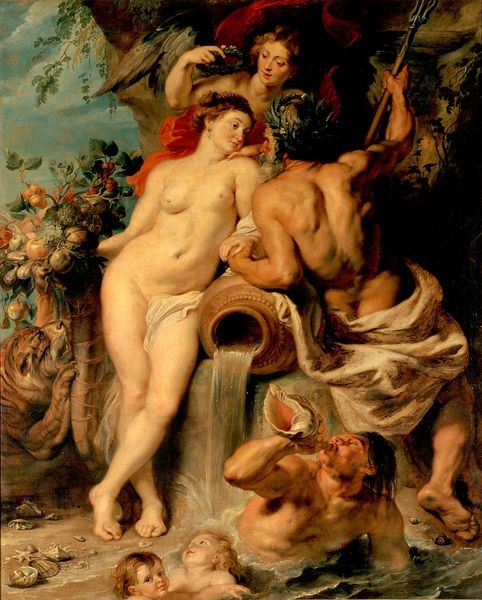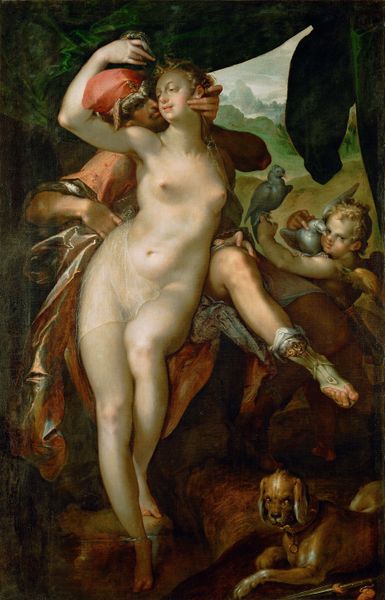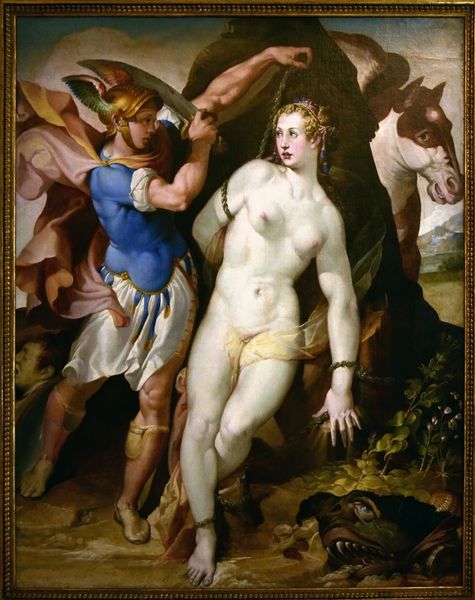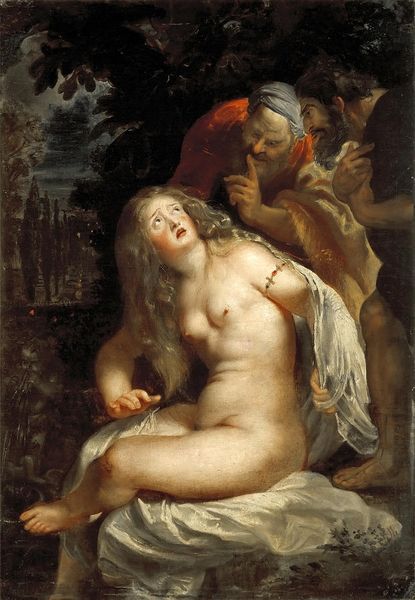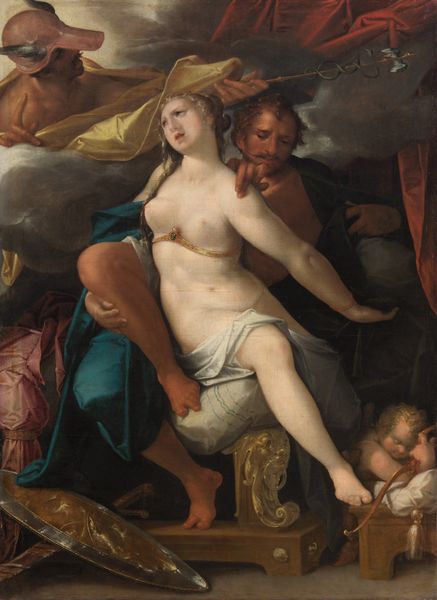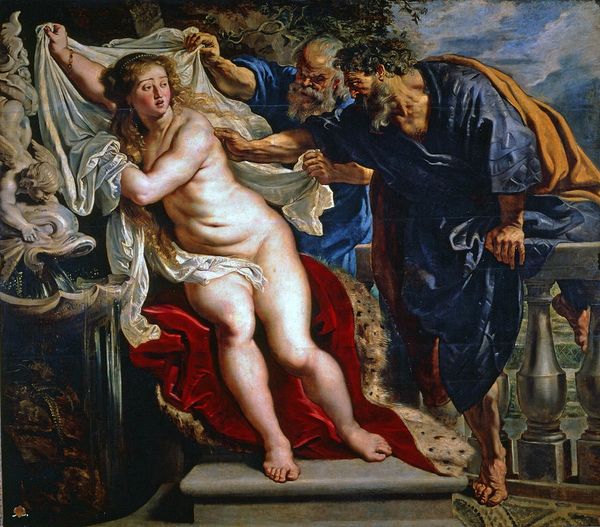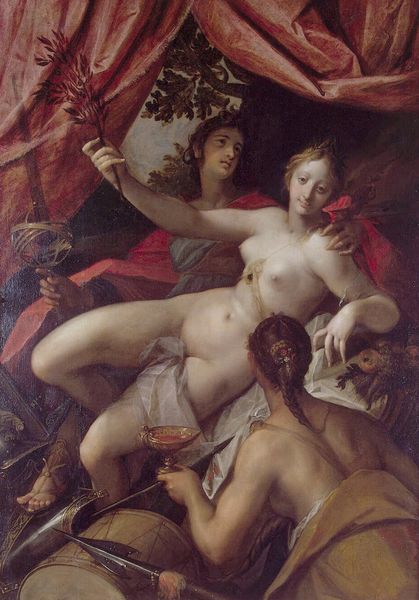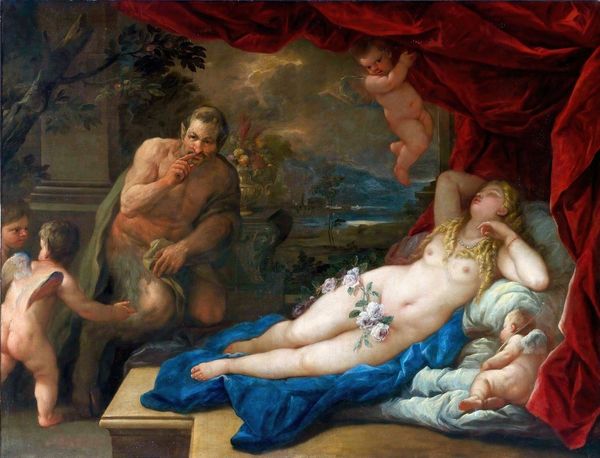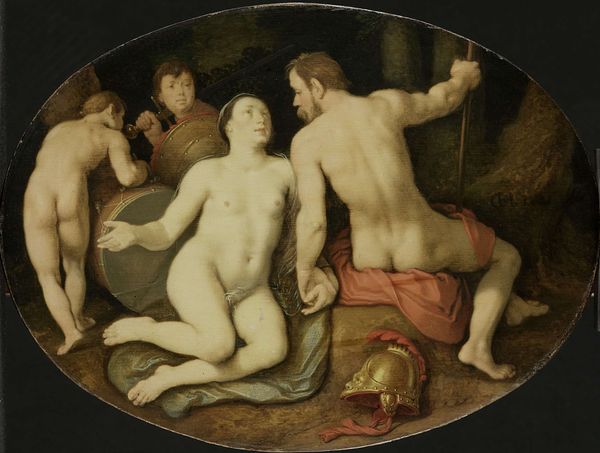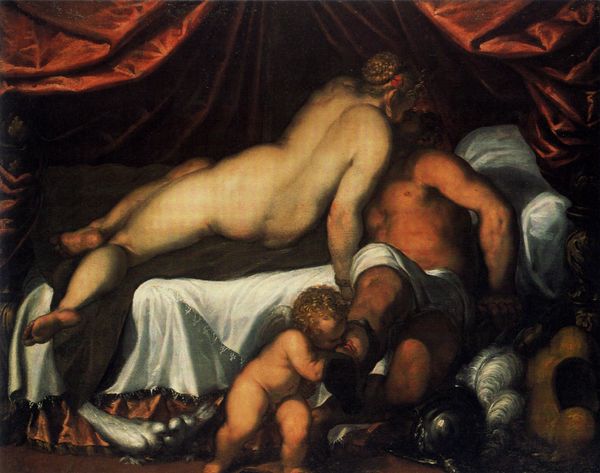
#
abstract painting
#
charcoal drawing
#
possibly oil pastel
#
oil painting
#
neo expressionist
#
acrylic on canvas
#
underpainting
#
painting painterly
#
portrait art
#
expressionist
Copyright: Public domain
Editor: Here we have Peter Paul Rubens’s "The Deposition." The figures surrounding Christ look distraught, and the stark lighting emphasizes the weight of the moment. What do you see in this piece beyond the obvious sorrow? Curator: Beyond the surface level, it’s crucial to unpack how Rubens utilizes the Baroque style to forward a specific agenda. "The Deposition", one in a cycle of works, comes at a historical moment when the Catholic Church felt threatened by the Protestant Reformation. How does Rubens reaffirm Catholic doctrine in this particular piece, visually? Editor: Is it about instilling certain emotions, like fear or awe, to encourage obedience to the Church? Curator: Exactly! Think about the raw emotionality and dynamism. But even more significantly, it reaffirms key doctrines like transubstantiation, the real presence of Christ in the Eucharist. He renders the scene with such visceral, tangible humanity – Christ’s physical body central, idealized yet still marked by suffering – as if to scream that doctrine through his canvas. Now, consider who Rubens painted this for… Editor: I guess a powerful patron. Curator: Yes. This altarpiece was originally commissioned for the Saint Walburga church, an important Jesuit institution in Antwerp. What does it tell us when religious orders harness images of suffering for persuasion or social control? Does that change how we interpret its artistic merits? Editor: Wow, that definitely gives me a lot to think about. Thanks for providing that crucial background. Curator: Absolutely. Recognizing these dynamics helps us critically engage with historical art and its lasting impacts, even today.
Comments
No comments
Be the first to comment and join the conversation on the ultimate creative platform.
